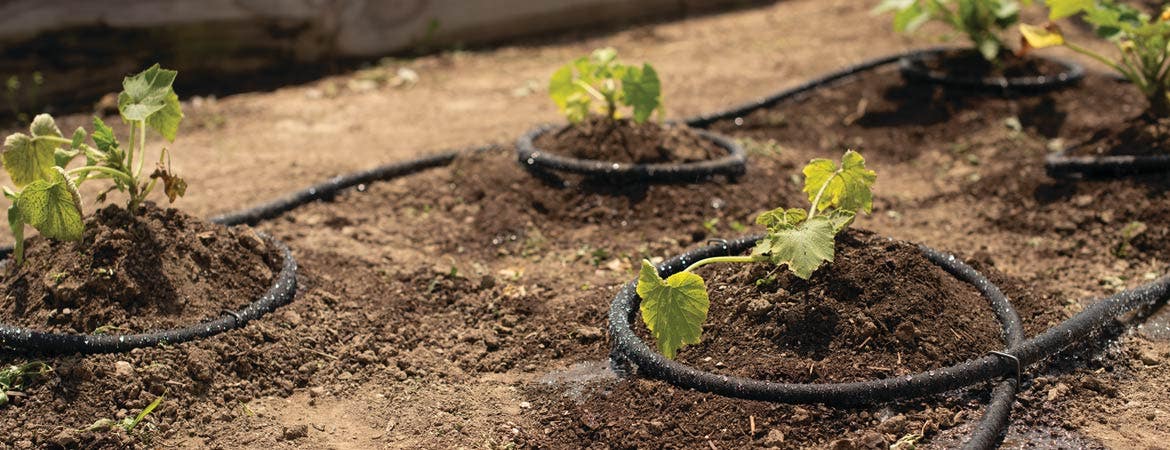Help Your Plants Beat the Heat!


Like most gardeners, I'm sure you've put a lot of work into planting and nurturing your garden, and have proudly been watching it grow through the spring and summer. The last thing you want to see is your plants wilting away in the scorching summer heat. Whether you've planted tasty vegetables, beautiful flowers or a new tree, help them survive rising temperatures with these useful tips:
Provide Slow, Deep Watering
Plants need water not only to grow, but also to take in vital nutrients from the soil. Most gardens need about an inch of water per week. Keep in mind that sandy soils do not retain water very well and may require much more water. It’s important to water for an extended period of time so that the soil becomes fully saturated down to the roots. This encourages deeper root growth which provides additional moisture to the plant and helps it survive extreme heat. A soaker hose is one of the best ways to conserve water by providing a slow, deep watering with minimal runoff. For trees, use a tree watering bag to efficiently soak the root ball and surrounding soil.
For more water saving tips, read our article Water Conservation and Energy Saving Tips.
Help Plants Retain Moisture
When watering just isn't enough, try a plant protection spray such as Wilt Pruf. This anti-transpirant helps plants hold in moisture for about 2 months. It combats the summer heat, drought conditions, air pollution, transplant shock and more. When planting or transplanting, use a product like Soil Moist to help absorb moisture and slowly release it into the soil as needed.
Don't Fertilize
Thirsty plants soak up water very quickly on hot summer days, and they take in fertilizer just as quickly. When you see your plants suffering from the heat, it’s tempting to want to add fertilizer, but this can easily burn your plants. It also triggers growth at a time when your plants don’t have the energy for it. Continue to thoroughly water your plants and hold off on fertilizing for now.
Add Mulch
Mulch is an excellent way to regulate soil temperature and help keep those roots nice and cool. It also reduces water evaporation and provides nutrients to your plants, making it a great alternative to using fertilizer. Mulch inhibits weed germination and growth; another great benefit because weeds steal much-needed water and nutrients from your plants. Apply a 2-4 inch layer of mulch to your garden, flower beds and around trees. Leave about a one inch mulch-free space around the base of trees. When mulch is piled up around tree trunks, it can cause disease and pest problems.
Give Them Some Shade
Reduce heat stress by moving shade-tolerant container plants to a shaded area, or by adding shade fabric over your garden. Leafy vegetables such as spinach, lettuce, broccoli, arugula and kale do well in the shade. Tomatoes, peppers and other vegetables that fruit from a flower are not as shade-tolerant but can still benefit from a little shade. If using shade fabric, just choose a lesser percentage of shade coverage for less tolerant plants.
Follow these tips and your plants should do just fine in the summer heat. Have any questions? We’d love to help! Email us at customercare@gardenersedge.com.

